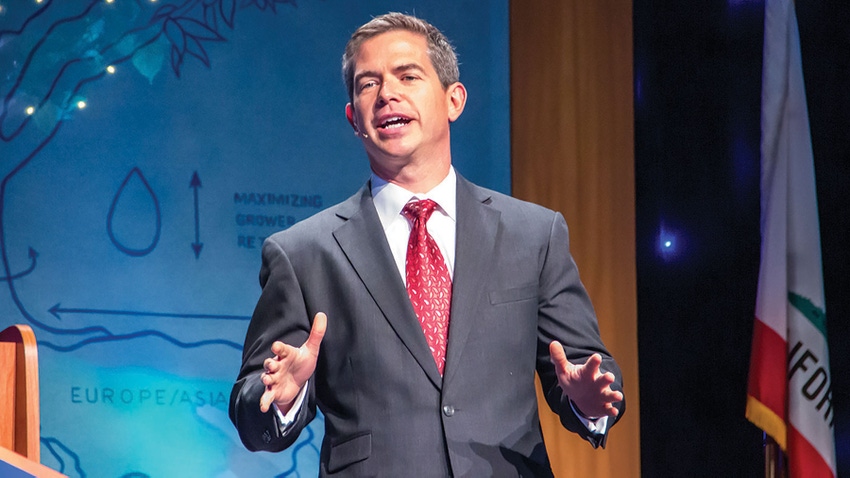
Mark Jansen, who announced in mid-November that he would be stepping aside as Blue Diamond Growers’ president and chief executive officer, says he didn’t want to stay too long.
“Blue Diamond has encountered and overcome all kinds of challenges during this time,” he told Western Farm Press. “Today we have record profitability. We’ve never been stronger. It seemed like a fortuitous time for me to orchestrate a graceful transition.”
Jansen, who is remaining with the organization through the transition, said he is still optimistic about almonds’ future.
“It’s my anticipation that by the second half of this crop year, by summer, we’ll see upward pressure on prices with the market growing again,” he said. “Blue Diamond anticipates double-digit growth into the future with renewed strength for growers.”
While admittedly difficult to encapsulate a decade-plus of progress, Jansen has seen the almond industry more than double during his tenure. “When we hit a billion pounds, we were worried about how we were going to sell all those almonds. Now that we’ve experienced well over a 3 billion pound crop— with our three largest crops on record recently—we’ve become the nut of choice in snack nut competition as well as plant-based milk consumption.
“All the great food companies in the world look to almonds first as their primary tree nut ingredient because we’ve done a tremendous job of building global demand. That’s something as an industry that we can be proud of and I think Blue Diamond has been at the tip of the spear in opening up new markets and developing new product categories.”
In response to the Almond Board of California’s Land IQ report that for the first time in decades, California almond acreage dropped in 2022, Jansen said it was part of the process.
“It’s natural evolution. For the past 15 years, almonds have been the most consistently-profitable thing you could plant — a consistently-profitable performance in an agricultural crop with a consistent level of plantings that look like they can continue indefinitely. “We’re honored by the grower confidence, but it’s a good thing for California agriculture to see more diversification on where and what people are planting. Hence, we’re seeing increased pullouts in a time of relatively lower market prices along with the dynamic of water scarcity.
Pricing cycles
“Every agricultural commodity goes through pricing cycles and when you have 80% of a world supply of a crop in one area producing increased supplies in record numbers, that puts a downward pressure on price. Almonds, over time, have seen five-year pricing cycles, and we’re at the low end of that cycle now. I can see global demand continuing to grow as will pricing.”
He acknowledged that the cost of growing almonds has gone up an estimated 40% over the last two years. “Growers have gotten pinched on both ends of the cost continuum with record supply getting squeezed on the revenue side, growers are wondering how they can make their economics more sustainable into the future, ensuring that the cycle and long-term profit become more important,” he said. “Growers don’t plant trees with a 20 year life cycle and expect to make it all back in one year.”Anticipating a graceful transition to his replacement, Jansen says almond growing probably won’t be a part of his future. “As a grower, I’ve got four trees in fourth leaf and I’ve yet to harvest a single almond, so my talents may lie elsewhere in the agricultural supply chain,” he admits.
Read more about:
AlmondsAbout the Author(s)
You May Also Like




